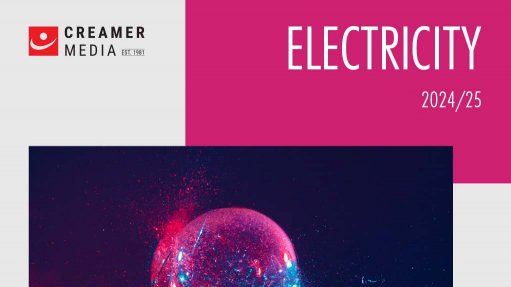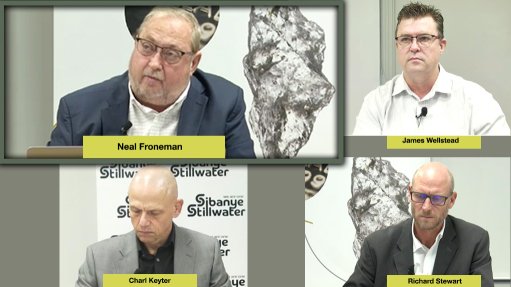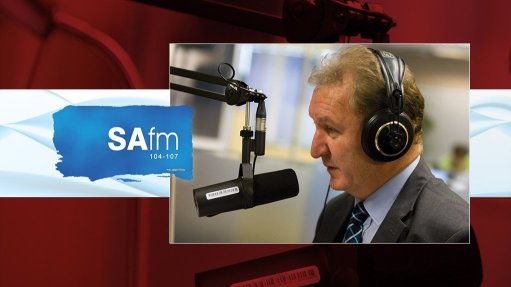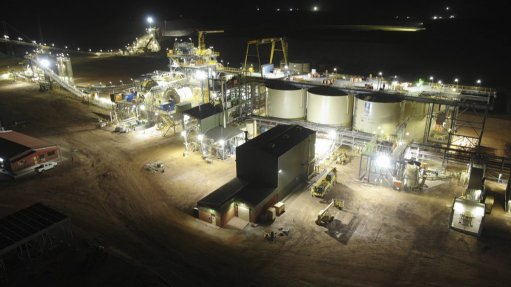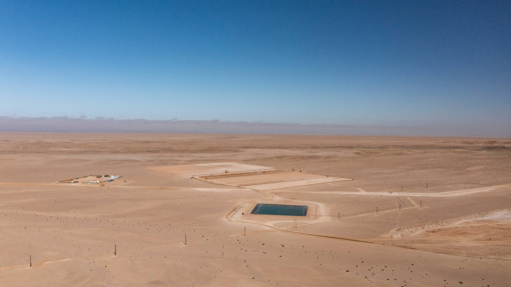Tiris drilling results demonstrate resource growth potential – Aura
Radiometric results from the first 1 612 air core drill holes at ASX- and Aim-listed Aura Energy’s Tiris uranium project, in Mauritania, have demonstrated significant resource growth potential beyond the current uranium mineral resources of 58.9-million pounds of triuranium octoxide (U3O8).
Aura reports that 9 239 m of drilling were completed in this first phase of a 15 500 m exploration drilling programme that started in December 2023.
The drilling programme is aimed at identifying potential resources that may exist adjacent to the currently identified resources.
Historically, Aura has targeted only very high strength radiometric anomalies during exploration programmes; however, during the current drilling programme, several conceptual targets were assessed on low and extremely low strength anomalies.
“The large number of significant intercepts identified on such anomalies confirms that there is significant potential to identify further resources associated with lower strength radiometric targets. This is a major change from previous exploration in the area,” the company says.
Aura MD and CEO Andrew Grove says two large areas of new mineralisation have been defined during the initial phase of drilling at both the Hippolyte South and Sadi prospects.
“Drilling has defined extensions to known mineralisation throughout the project area. The fact that low‐level radiometric anomalies have delivered potentially economic mineralisation, significantly increases the exploration potential of the areas that were not considered prospective previously.
“Some of the 13 000 km2 of new tenement applications also overlie large radiometric anomalies adjacent to our current resource areas at Tiris East, further demonstrating the huge potential of the region,” he says.
HIPPOLYTE SOUTH
The company notes that drilling at Hippolyte South has returned “excellent” results, defining mineralisation over an extensive area of about 3 km by 2 km in size, both surrounding and trending south of the current resource area.
New high‐grade mineralisation has been defined over an extensive 6 km2 area, with mineralisation extended to the east and northwest from the previous resource areas and to the southwest for over 3 km and remains open.
“Mineralisation contains very high grades of up to 1 170 ppm U3O8 and these results have excellent potential to add to the mineral resources in that area,” the company says.
The average width of all significant intercepts received from Hippolyte South was 1.6 m and the top of the mineralisation was on average 1.4 m from the surface.
A large number of mineralised intercepts were returned from adjacent to the current resource boundary to the east and northwest, suggesting the presence of major extensions to the mineralised zones, and potentially providing links between mineral resources that are currently separate.
To the south, several significant intercepts were returned coincident with radiometric anomalies and could also suggest a continuation of mineralisation to the south.
SADI
Sadi drilling results defined a continuation of mineralisation south of the current resource area of over 1.2 km in strike. Drilling to the south of the western margin of mineralisation identified an extensive mineralised area that remains open to the west and south.
These results also have the potential to significantly add to the mineral resources in that area.
The average width of all significant intercepts received from Sadi was 1.5 m and the top of the mineralisation was on average 1.6 m from the surface.
Mineralisation was also intersected down to a depth of 14.6 m, potentially indicating the possibility of mineralisation developing at depth and most holes have only been drilled to a depth of 5.5 m.
Importantly, only a small proportion of the significant intercepts were within high strength radiometric anomalies, with many occurring on low or very low strength radiometric anomalies.
Drilling over the area of low strength radiometric anomalism to the east of the current resource returned several significant intercepts.
This gives weight to the conceptual targeting of lower strength radiometric anomalies having the potential to indicate the presence of economic mineralisation and significantly increases the prospectivity of the whole area.
Phase 2 drilling is continuing with infill and step out drilling from the significant intercepts presented in this release with the aim of achieving a drill density of at least 200 m by 100 m.
Wider spaced drilling – 200 m by 200 m – will be used over lower-grade areas to define the potential of identifying higher grade mineralisation within those zones.
Field mapping will continue, providing a classification of outcrop hardness and level of weathering.
“We are looking forward to the future drilling results and updating the mineral resource estimate in the second quarter of 2024,” Grove expresses.
Comments
Announcements
What's On
Subscribe to improve your user experience...
Option 1 (equivalent of R125 a month):
Receive a weekly copy of Creamer Media's Engineering News & Mining Weekly magazine
(print copy for those in South Africa and e-magazine for those outside of South Africa)
Receive daily email newsletters
Access to full search results
Access archive of magazine back copies
Access to Projects in Progress
Access to ONE Research Report of your choice in PDF format
Option 2 (equivalent of R375 a month):
All benefits from Option 1
PLUS
Access to Creamer Media's Research Channel Africa for ALL Research Reports, in PDF format, on various industrial and mining sectors
including Electricity; Water; Energy Transition; Hydrogen; Roads, Rail and Ports; Coal; Gold; Platinum; Battery Metals; etc.
Already a subscriber?
Forgotten your password?
Receive weekly copy of Creamer Media's Engineering News & Mining Weekly magazine (print copy for those in South Africa and e-magazine for those outside of South Africa)
➕
Recieve daily email newsletters
➕
Access to full search results
➕
Access archive of magazine back copies
➕
Access to Projects in Progress
➕
Access to ONE Research Report of your choice in PDF format
RESEARCH CHANNEL AFRICA
R4500 (equivalent of R375 a month)
SUBSCRIBEAll benefits from Option 1
➕
Access to Creamer Media's Research Channel Africa for ALL Research Reports on various industrial and mining sectors, in PDF format, including on:
Electricity
➕
Water
➕
Energy Transition
➕
Hydrogen
➕
Roads, Rail and Ports
➕
Coal
➕
Gold
➕
Platinum
➕
Battery Metals
➕
etc.
Receive all benefits from Option 1 or Option 2 delivered to numerous people at your company
➕
Multiple User names and Passwords for simultaneous log-ins
➕
Intranet integration access to all in your organisation





